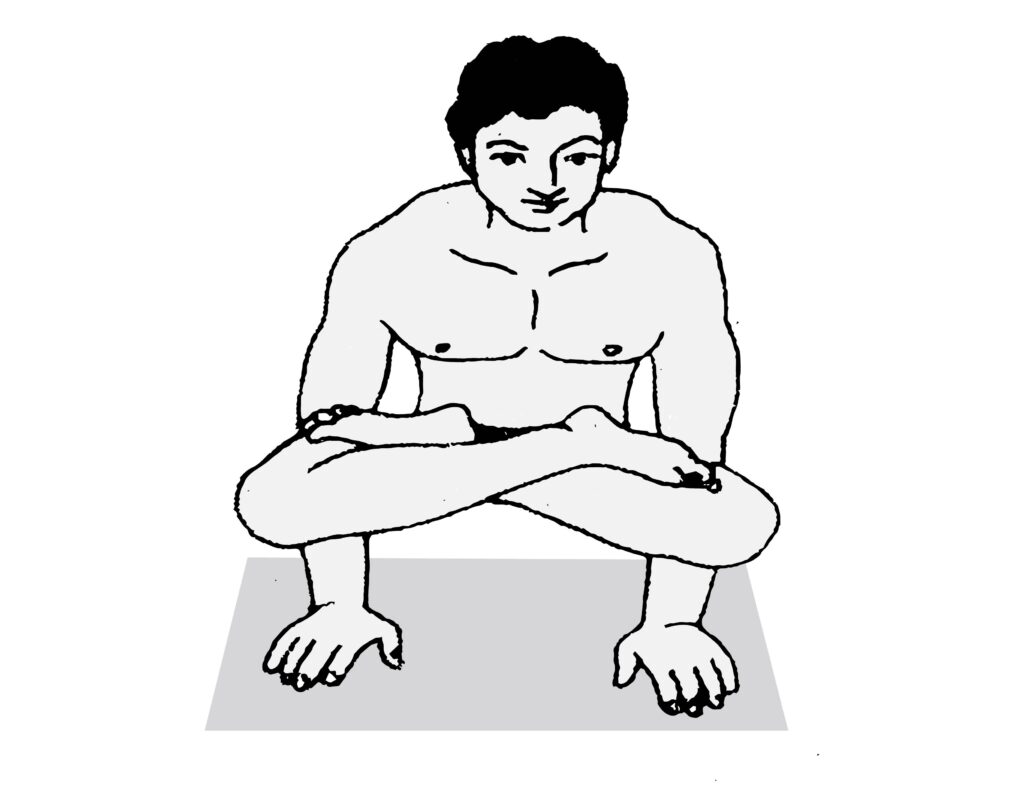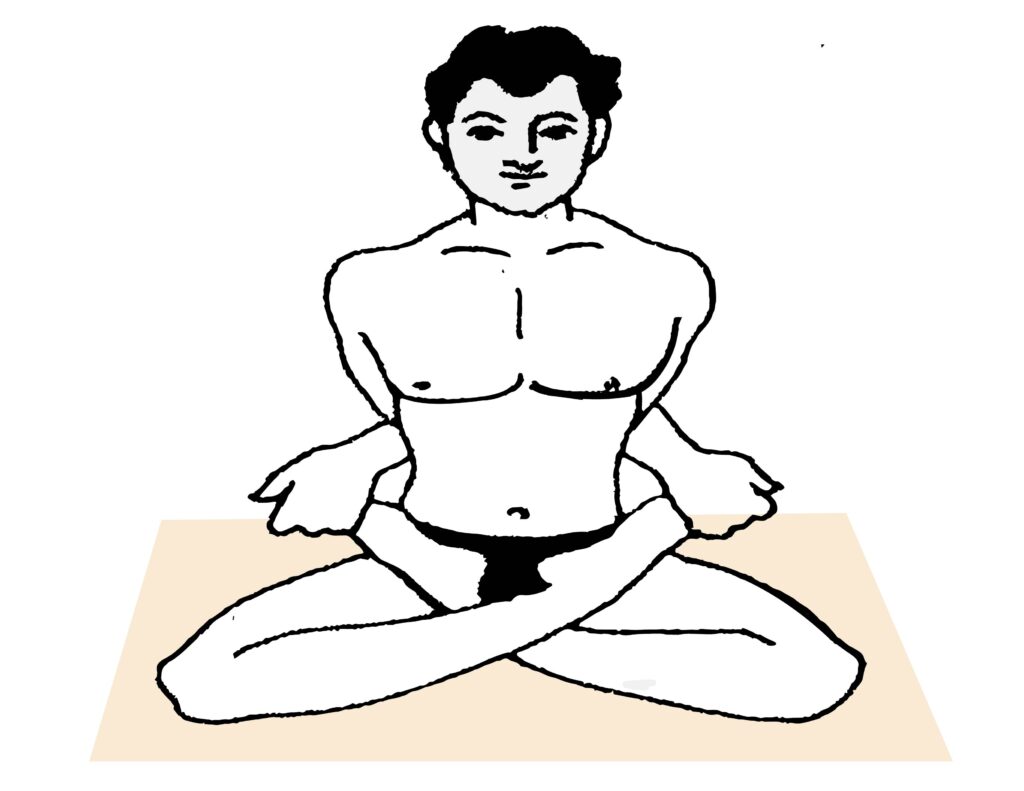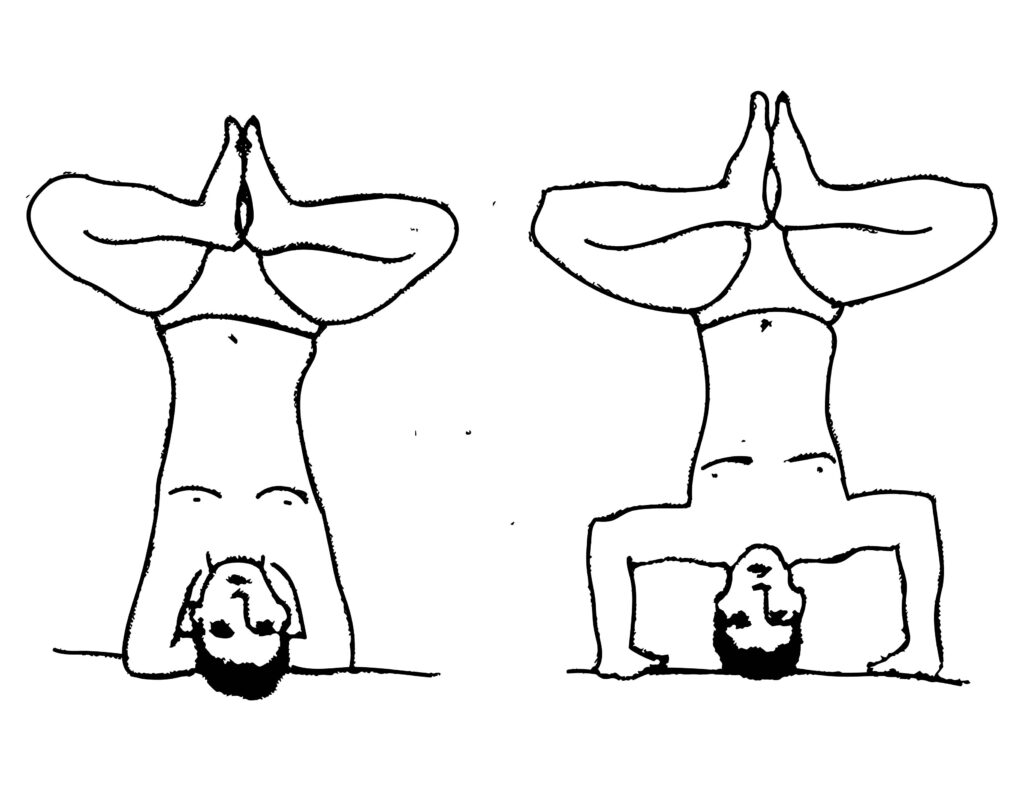
What is Padmasana?
In this asana, the legs should be placed on top of each other in such a way that it looks like a lotus pattern. So it is called Padmasana. It is again divided into 6 parts-
Muktapadmasana-
First, sit straight with your legs spread in front. Then bend the right leg from the knee and place it on the left knee in such a way that the heel of the right leg touches the abdomen or slightly above the Lingamula. Now bend the left from the knee and place it on the right leg in such a way that the heel of the left leg touches the right bladder and the spine is straight. Hold for 30 seconds and switch legs again. Rest for 15 seconds in Shavasana.
Advantage:
The spine is straight. Arthritis of the feet is better. This asana is good for clerks, writers, and students who work long hours bending down.
Veerasana:
First, sit in a normal seat. Now bend the left leg of the knee and place it on the right knee and bend it near the right knee and place it under the left leg. Now sit straight. Do 4 times 2 times each time.
Advantage:
The spine is straight, youth remains intact for a long time, and skin diseases and stomach diseases are cured.
Raised padmasana:

First, sit in padmasana as before. Then lift the body as far as possible keeping the weight of the body on the two hands. Keep breathing and exhalation normal in that condition. Stay in that position for 15 seconds. Then sit down and rest for 10 seconds and start again.
Advantage:
This asana reduces body fat, increases appetite, and strengthens and activates the muscles of the stomach, arms, and shoulders.
Closed Padmasana-

First, sit in padmasana. Then bring the right hand over the back and hold the right big toe and the left hand over the back hold the left toe. Extend the vision forward. Keep the nose and mouth straight. Inflate the chest. Stay in this asana for 30 seconds rest for 10 seconds and practice the asana again by switching legs.
Advantage:
This asana straightens the spine, aligns the shoulders, and restores normal position for those with vocal folds.
Upper Padmasana:

First, make a thick blanket bed and sit on it. Then place both knees on the bed in such a way that the fingers are intertwined and touch the ground from the elbow to the hand. Place the head over the joined hands and keep elbows centered. Now slowly bend the legs and place both feet on both legs. Now keep the two legs straight and push the shoulders, necks, back, and waist with the legs and lift up. From that position for 5-6 seconds, lower the leg again, rest for 10-15 seconds, and repeat.
Advantage:
Women who have repeated miscarriages do not lose their wombs. Abdominal patients and chest patients benefit from this asana.
Half-Band Padmasana:
Sit straight with legs spread in front. Then bend to the left knee and touch the right side of the abdomen with the heel of the left foot take the left and over the back and grasp the left toe and the right toe with the right hand. Rest like this for 30 seconds to 10 minutes in Shavasana and do asana again.
Advantage:
This asana cures lumbar rheumatism, and sciatica rheumatism and increases appetite.
Who should not do padmasana?
- If you have weak or injured knees avoid doing this posture as it places a lot of strain on the knees.
- If you suffer from sciatica it is preferable to not attempt this yoga posture.
- In the case of ankle injury do not practice this posture.
Benefits of padmasana:
- Stretches the ankles and knees.
- Calms the brain
- Increases awareness and attentiveness.
- Keeps the spine straight.
- Helps develop good posture.
- Eases menstrual discomfort and sciatica.
- Helps keep joints and ligaments flexible.
How long one can sit in Padmasana?
Maintain this position for as long as comfortable. Those who wish to use this pose for meditation should sit for at least 20 minutes. slowly increase it so that your duration of meditation too can increase. At some point, the legs may start to pain.
Who should not do padmasana?
If you have weak or injured knees avoid doing this posture as it places lots of strain on the knees. If you suffer from sciatica it is preferable to not attempt this yoga posture. In the case of ankle injury do not practice this posture.
How long should do Kapal Bhati?
A healthy and even slightly sick person should do kapalabhati for 15 minutes. In three rounds in 15 minutes, kapalabhati is done 900 times.
How many times Kapal Bhati should be done in a day?
Normally, people perform kapalphati one time in a day, but if someone wants to cure critical disease with kapalbhati, can do this pranayama 2 or 3 times a day on an empty stomach.
Who should not do kapal Bhati?
Pregnant women should also avoid doing kapalbhati as forcefully contracting the abdominal muscle can harm the unborn baby. If you suffer from heart disease, exhale slowly. People who have high blood pressure should not increase their rate of kapalbhati. Stick with a lower rate, like one stroke per second.
Why Anulom Vilom are beneficial ?
- Anulom Vilom pranayama is very helpful. It is very effective for body purification.
- It helps in calming your mind and relieving you of the stresses of the daily routine.
- It can help in reducing depression.
- It may enhance your skin health.
- It has the potential to improve vision.
- It helps reduce blood pressure.
- It can enhance the oxygen supply of the body.
- It can help to reduce mental depression improve heart health and help cure other diseases such as asthma, depression, migraine, high blood pressure, arthritis, and many others.
How do anulom vilom pranayam?
Firstly sit in Mudra. Then, breathe in from the right nostril closing the left nostril with the middle finger and ring finger, and breathe out from the left nostril closing the right nostril with thumb. Do it continuously and it is known as Anulom Vilom Pranayam. Initially do it for 1-3 minutes with practice, you can do it continuously for 5-15 minutes.
